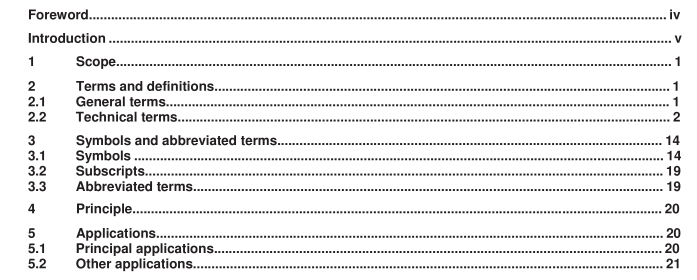BS EN ISO 14692-1:2002 – Petroleum and natural gas industries — Glass- reinforced plastics (GRP) piping — Part 1: Vocabulary, symbols, applications and materials

1 Scope
This part of ISO 1 4692 gives the terms, definitions and symbols used in the specification, manufacture, testing and installation of glass-reinforced plastics (GRP) piping installations associated with offshore applications on both fixed and floating topsides facilities for oil and gas industry production and processing. It also describes the philosophy and provides guidance on the range of suitable applications for such piping, and defines limitations to the materials of construction for these applications.
It is intended to be used in conjunction with the other parts of ISO 1 4692.
This part of ISO 1 4692 also describes the pressure terminology used in ISO 1 4692 (all parts).
2 Terms and definitions
For the purposes of this document, the following terms and definitions apply.
2.1 General terms
2.1.1
authority having jurisdiction
third-party organization required to be satisfied with the standard of engineering proficiency and safety of a project
EXAMPLE A classification society, verification body or government regulatory body.
2.1.2
contractor
party which carries out all or part of the design, engineering, procurement, construction and commissioning for a project or operation of a facility
NOTE The principal (2.1 .9) may undertake all or part of the duties of the contractor.
2.1.3
designer
party which carries out all or part of the design for a project or facility
2.1.4
installer
party which carries out all or part of the construction and commissioning of composite pipe installations and installation work for a project
2.1.5
installation inspector
person able to perform satisfactory and independent inspection of composite pipe installations and installation
work
2.1.6
installation supervisor
tradesman able to perform practical supervision of the installation and joining of composite pipes
2.1.7
manufacturer
party which manufactures or supplies equipment to perform the duties specified by the contractor
2.1.8
operator
party which assumes ultimate responsibility for the operation and maintenance of the piping system
NOTE The operator may or may not be the same as the principal or principal’s agent.
2.1.9
principal
party that initiates the project and ultimately pays for its design and construction
NOTE The principal generally specifies the technical requirements and is ultimately responsible for ensuring that safety and all other issues are addressed. The principal may also include an agent or consultant, authorized to act for the principal.
2.1.10
site
location where piping system is installed
2.2 Technical terms
2.2.1
accelerator
substance which, when mixed with a catalyst or a resin, will speed up the chemical reaction between catalyst and resin
2.2.2
active fire protection
method of extinguishing fire by application of substances such as halon, water, CO 2 , foam, etc.
2.2.3
adhesive joint
adhesive bond
bonded joint
glued joint
socket joint
rigid type of joint between two components made using an adhesive
NOTE Generally consists of a slightly conical (tapered) bell end and a machined (cylindrical or tapered) spigot end.
2.2.4
anisotropic
exhibiting different properties when tested along axes in different directions
BS EN ISO 14692-1:2002 – Petroleum and natural gas industries — Glass- reinforced plastics (GRP) piping — Part 1: Vocabulary, symbols, applications and materials